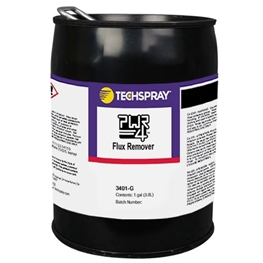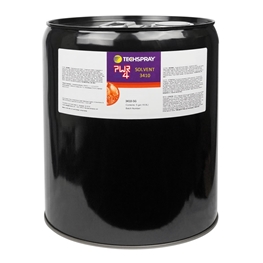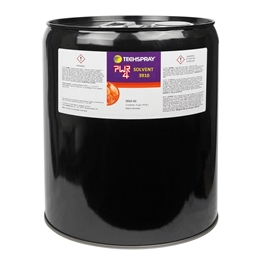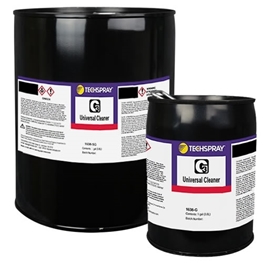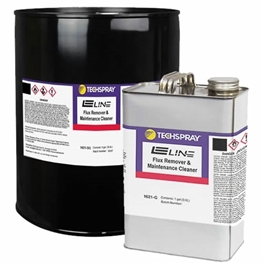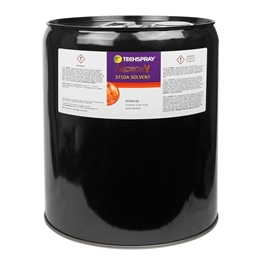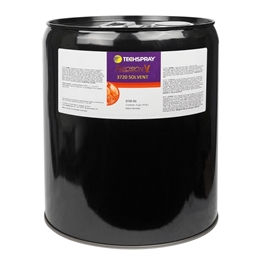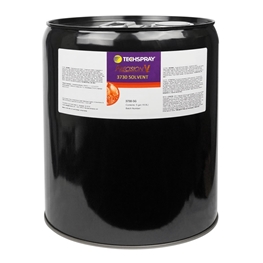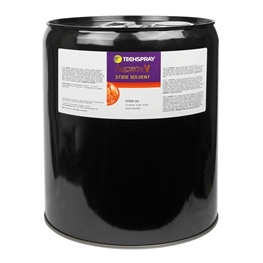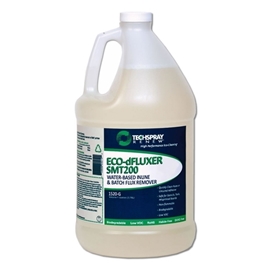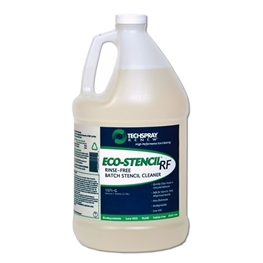Versatile Selection of Ultrasonic Cleaner Solutions
Techspray offers a variety of solvent and water-based ultrasonic cleaners. An efficient ultrasonic cleaner is designed to work in a variety of applications such as electronics cleaning, industrial cleaning, machinery and much more.
- Techspray Renew - Water-based flux removers with zero GWP and low VOC.
- PWR-4 – Cost effective, nonflammable, and low toxicity, so ideal replacement for n-propyl bromide (nPB) and other toxic industrial solvents.
- G3 - a Top-selling nonflammable solvent that’s effective on the broadest array of soils.
- Precision-V – Nonflammable replacement for AK225, and ideal for aviation, aerospace, medical and military applications.
For ultrasonic cleaning, safety is our top priority:
- Flammability - Choosing a nonflammable cleaner is generally the safest choice. Otherwise, ventilation has to be explosion-proof and adequate to remove all the flammable fumes so they don't accumulate and create a significant hazard. It is also common to clean in a heated ultrasonic bath for extra solvency, which makes the use of a nonflammable cleaner all the more critical. Techspray offers three brand names of nonflammable solvents: G3, PWR-4, and Precision-V.
- Toxicity - Techspray offers innovative solvents that are much safer than the four most common industrial solvents: TCE, nPB, Perc and Methylene Chloride. They quickly clean the most difficult greases and fluxes. None of Techspray ultrasonic cleaners contain these highly toxic solvents, and PWR-4 is specifically engineered as a replacement.
PCB Assembly Applications
-
 Adhesive removal
Adhesive removal
-
 Flux removal
Flux removal
-
 Manual stencil cleaning
Manual stencil cleaning
-
 Paste removal
Paste removal
-
 Reflow oven cleaning
Reflow oven cleaning
-
 Rinse-free stencil cleaning
Rinse-free stencil cleaning
-
 Spray-in-air stencil cleaning
Spray-in-air stencil cleaning
-
 Ultrasonic stencil cleaning
Ultrasonic stencil cleaning
-
 Understencil cleaning
Understencil cleaning
-
 Wave finger cleaning
Wave finger cleaning
Soil Type / Application
Plastic Sensitivity(Choose One)
Environmental & Safety
Applied Filters
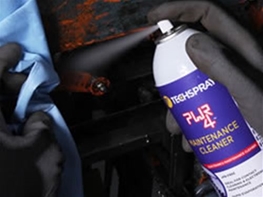
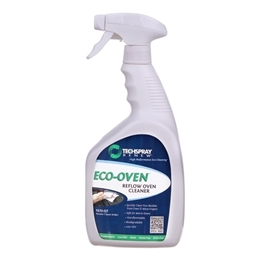
FAQ's
Every organization using hazardous chemicals within their facility has the responsibility to equip their facility and personnel to maintain exposure levels below the TLV. Personal monitoring badges can be used to measure exposure of a specific material. Then, depending on the threshold limit and the application, exposure can be controlled with PPE like masks, face shields, respirators, and even coveralls. If they don’t reduce exposure below the recommended limit, you will need to consider a special ventilation hood or even containment booth. As you can see, as the exposure limit gets down to a certain level, the equipment required to safely use the solvent can get impractical. At that point, your best option is to consider a safer alternative.
If the chemistry is a good solvency match to the soil, less sonic agitation will be needed. This allows you to run your cleaning process more quickly, at lower temperature, and lower amplitude, decreasing the likelihood of damaging sensitive components. The following are characteristics to look for when reviewing options:
- Solvency – Ability of the cleaner to breakdown and dissolve the soil. For a quick evaluation of solvency, place a drop of cleaner directly on the soiled part, let it sit for a few minutes, and they blot it dry. From this simple test, you can generally tell if the chemistry is a good match to the soil. If the cleaner just sits on the surface of the soil, and doesn’t wet and start to break down the soil, move on to the next cleaner.
- Surface tension – This impacts how well a solvent can get into tight crevices, like under low stand-off components.
- Density – Density can have a minor impact on how quickly the sonic waves travel through the liquid, and the amount of cavitation. A higher density material requires more energy to move, so could deplete the energy, thus the cleaning power, by the time it reach the part.


